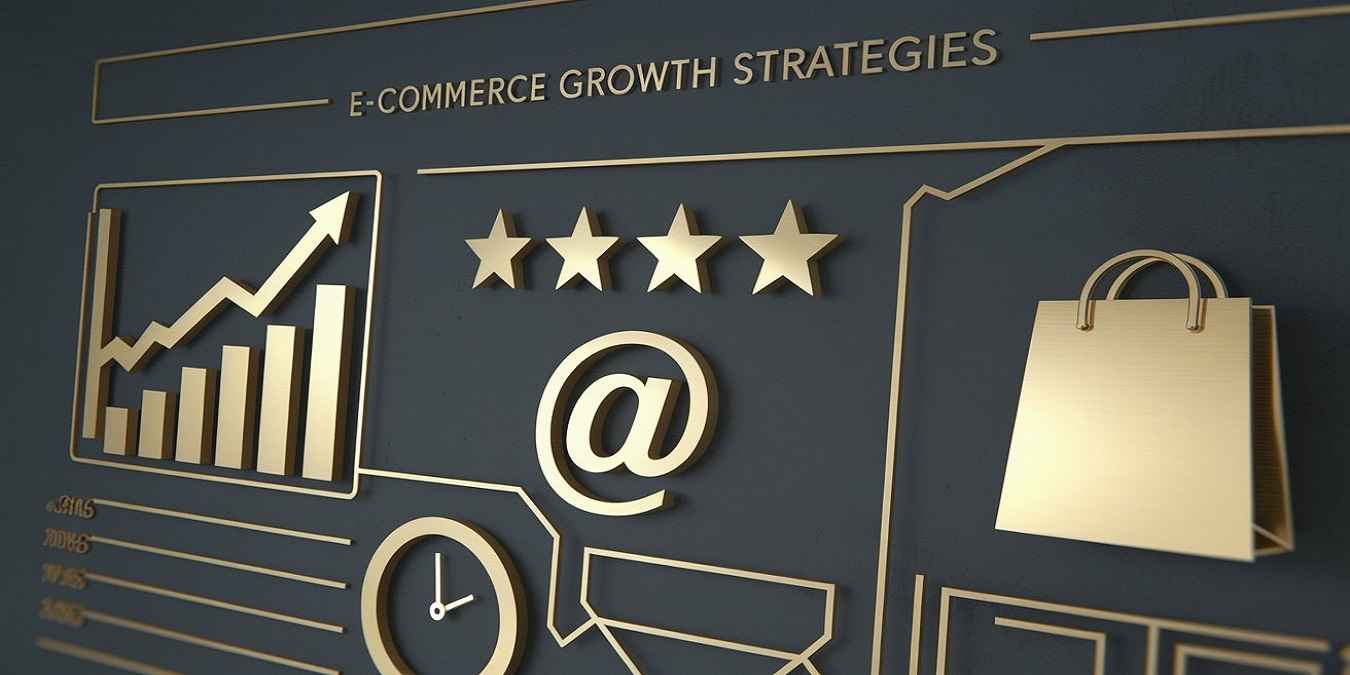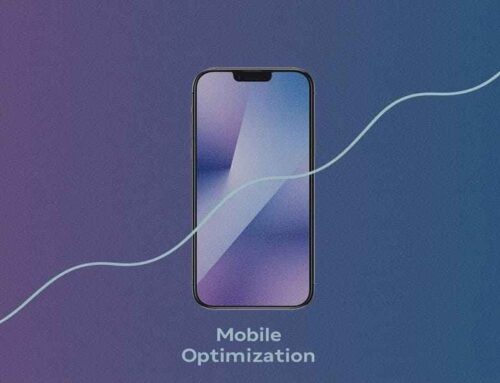
5 E-commerce Growth Strategies for Success
Did you know that 90% of e-commerce businesses fail within their first year? The difference between those that thrive and those that vanish often boils down to one thing: effective e-commerce growth strategies.
Whether you’re a seasoned seller or just launching your online store, the right tactics can transform your trajectory. But with so many options, where do you start?
In this guide, we’ll dive into five proven strategies for success that go beyond basic tips. You’ll learn how to optimize every aspect of your business, from customer experience to data-driven decisions, to unlock explosive growth.
Ready to turn your store into a revenue powerhouse? Let’s begin.
-
Optimize User Experience (UX) to Keep Shoppers Hooked
“Design is not just what it looks like and feels like. Design is how it works.” – Steve Jobs
Imagine visiting a website that takes ages to load, has confusing navigation or hides its checkout button. How quickly would you leave? User experience (UX) is the backbone of e-commerce growth strategies. A seamless, intuitive journey keeps customers engaged, reduces bounce rates and boosts conversions.
How to Implement This Strategy for Success:
- Speed Matters: Compress images and use caching tools. A one-second delay can cut conversions by 7%.
- Mobile-First Design: Over 70% of online purchases happen on mobile. Ensure your site is responsive.
- Simplify Navigation: Use clear categories, filters and a visible search bar.
- Streamline Checkout: Offer guest checkout, autofill options and multiple payment gateways.
Real-World Example: After revamping its checkout process with a one-page design, ASOS reduced cart abandonment by 50%.
As Gary Vaynerchuk says, “The best marketing strategy ever: CARE.”
Ask Yourself: Is your website a joy to navigate or a maze of frustration?
-
Leverage Social Proof to Build Trust Instantly
“People influence people. Nothing influences people more than a recommendation from a trusted friend.” – Mark Zuckerberg
Today’s shoppers are skeptical. They’ll Google reviews, compare ratings and stalk your social media before buying. Social proof, like customer reviews, testimonials and user-generated content, acts as a digital “Word-of-Mouth” that builds credibility.
Growth Strategies for Success with Social Proof:
- Display Reviews Prominently: Feature star ratings on product pages.
- Showcase User-Generated Content: Repost customer photos on your site and social feeds.
- Highlight Trust Badges: SSL certificates, payment security logos and return guarantees.
- Influencer Partnerships: Collaborate with micro-influencers to reach niche audiences.
Case Study: Glossier’s entire brand revolves around user-generated content, with 90% of its social posts featuring customer photos.
Question: Are you letting your happy customers sell for you?
-
Master Email Marketing to Nurture Lifelong Customers
“Email has an ability many channels don’t: creating valuable, personal touches, at scale.” – David Newman
Email marketing generates $42 for every $1 spent, a staggering 4,200% ROI. Yet, many brands still blast generic promotions. To succeed, treat email as a relationship-building tool.
Strategies for Success with Email:
- Segment Your List: Send tailored offers based on behavior (e.g., cart abandoners vs. loyal buyers).
- Personalize Subject Lines: “John, your favorite sneakers are back in stock!” beats “Big Sale!”
- Automate Workflows: Welcome email series, post-purchase follow-ups and re-engagement campaigns.
- Offer Exclusive Value: Early access, discounts or members-only content.
Pro Tip: Beardbrand increased email revenue by 25% by sending personalized product recommendations.
Ask Yourself: Are you treating subscribers like friends or just another email address?
-
Invest in Paid Advertising to Accelerate Visibility
“Don’t tell me how good you make it; tell me how good it makes me when I use it.” – Leo Burnett
Organic growth is great, but paid ads put your store in front of high-intent buyers instantly. Platforms like Google Ads, Facebook and LinkedIn offer laser-targeted options to maximize ROI.
Growth Strategies for Success with Ads:
- Retargeting Campaigns: 70% of cart abandoners convert when retargeted.
- A/B Test Creatives: Experiment with visuals, CTAs and audience segments.
- Use Video Ads: Shoppers are 1.8x more likely to purchase after watching a video.
- Leverage AI Tools: Automate bidding and optimize campaigns in real-time.
Success Story: MVMT Watches scaled from 0 to 100M in 5 years using Facebook ads paired with influencer content.
Question: Is your ad budget working hard or hardly working?
-
Harness Data Analytics to Make Smarter Decisions
“Without data, you’re just another person with an opinion.” – W. Edwards Deming
Guessing games won’t cut it in e-commerce. Data-driven insights help you understand customer behavior, predict trends and allocate resources wisely.
Strategies for Success with Analytics:
- Track Key Metrics: Conversion rate, average order value (AOV) and customer lifetime value (CLV).
- Use Heatmaps: Tools like Hotjar reveal where users click, scroll or drop off.
- Predictive Analytics: Forecast demand and optimize inventory.
- A/B Test Everything: Headlines, pricing, layouts, let data guide decisions.
Example: By analyzing checkout funnel data, Gymshark identified a 12% drop-off at the shipping page and introduced free shipping thresholds, boosting AOV by 15%.
Ask Yourself: Are you running your business on hunches or hard evidence?
Conclusion: Turn These E-commerce Growth Strategies into Action
The digital marketplace is crowded, but with the right e-commerce growth strategies, your business can stand out and thrive. From crafting a frictionless user experience to leveraging the power of data, each tactic we’ve covered is a stepping stone toward sustainable success.
Remember, growth isn’t about chasing every trend, it’s about mastering the fundamentals and adapting relentlessly. As Jeff Bezos once said, “What’s dangerous is not to evolve.”
Your Next Move: Audit your current strategies. Which of these five areas can you improve this week? Start small, measure results and scale what works. The road to e-commerce success begins now.
FAQs: 5 E-commerce Growth Strategies for Success
1. What’s the most effective e-commerce growth strategy for new businesses?
While all strategies matter, optimizing user experience (UX) is critical for new brands. A seamless, fast and mobile-friendly website builds trust and reduces bounce rates, giving you a strong foundation to scale other tactics like paid ads or email marketing. Start with UX audits and A/B testing to fix friction points before investing heavily in acquisition.
2. How long does it take to see results from these strategies?
It depends on the tactic:
- UX improvements can boost conversions within weeks.
- Email marketing requires 3–6 months to nurture loyalty.
- Paid ads may deliver instant traffic, but refining campaigns for ROI takes 1–2 months.
- Social proof (e.g., reviews) builds credibility over time but starts influencing buyers immediately.
3. Can small businesses afford paid advertising?
Yes! Start with a modest budget and focus on high-ROI platforms:
- Facebook/Instagram Ads: Target hyper-specific audiences.
- Google Shopping Ads: Prioritize buyers searching for your products.
- LinkedIn Ads: Reach professionals with viral-style content.
Use retargeting to maximize every dollar, 70% of cart abandoners convert when reminded.
4. How do I handle negative reviews as social proof?
Negative reviews aren’t all bad, they humanize your brand. Respond professionally, resolve issues publicly and showcase how you’ve improved. Platforms like Trustpilot let you highlight recent positive reviews to balance older critiques.
5. What email marketing tools are best for beginners?
Start with affordable, user-friendly platforms like:
- Klaviyo: Built for e-commerce, with pre-built workflows.
- Mailchimp: Great for basic automation.
- Omnisend: Combines email and SMS marketing.
6. How do I prioritize growth strategies with limited resources?
Focus on quick wins first:
- Fix UX issues hurting conversions (e.g., slow loading speeds).
- Launch email welcome sequences (low cost, high ROI).
- Run retargeting ads to recover lost sales.
Scale into influencer partnerships or predictive analytics as revenue grows.
7. What’s the biggest mistake brands make with e-commerce growth?
Neglecting customer retention. Acquiring a new customer costs 5x more than retaining one. Use email marketing, loyalty programs and personalized offers to turn first-time buyers into repeat shoppers.
8. How do I measure the success of these strategies?
Track these KPIs:
- Conversion Rate: Are visitors buying?
- Average Order Value (AOV): Are customers spending more?
- Customer Lifetime Value (CLV): How much revenue does a buyer generate over time?
- Cart Abandonment Rate: Is your checkout process broken?
9. Are influencer partnerships worth the investment?
Yes, but choose wisely. Micro-influencers (10k–100k followers) often deliver better ROI than celebrities. For example, a niche skincare influencer can drive more targeted sales than a generic lifestyle star. Always track promo codes or UTM links to measure their impact.
10. How do I stay updated on evolving e-commerce trends?
- Follow industry leaders (e.g., Neil Patel, Shopify’s blog).
- Join communities like r/ecommerce on Reddit.
- Use tools like Google Trends or SEMrush to spot emerging keywords and buyer behaviors.
Final Tip: As Peter Drucker said, “What gets measured gets managed.” Regularly audit your strategies, pivot based on data and stay agile. Success in e-commerce isn’t about perfection, it’s about progress.















I conceive this internet site holds some really excellent info for everyone. “The foundation of every state is the education of its youth.” by Diogenes.